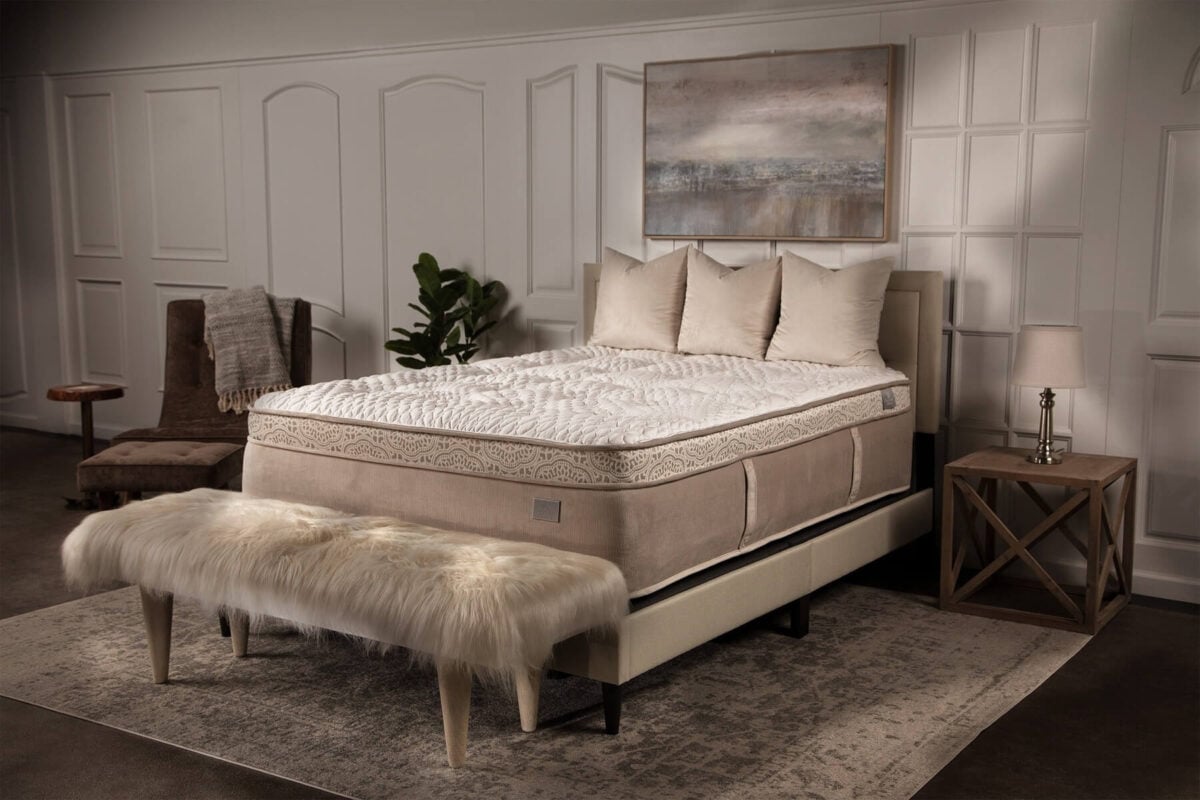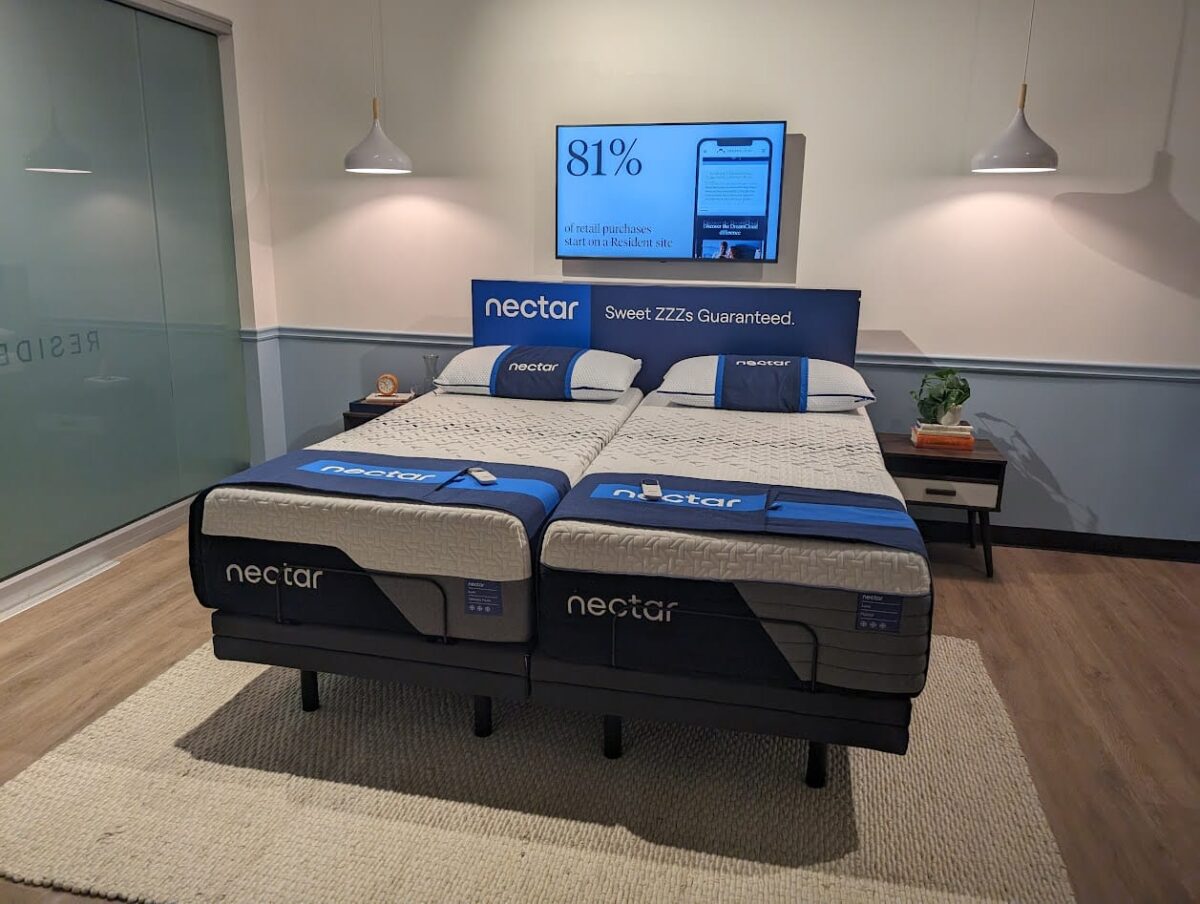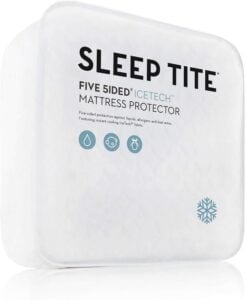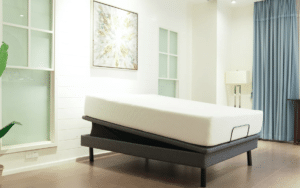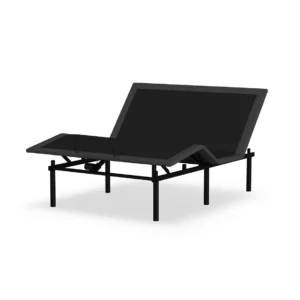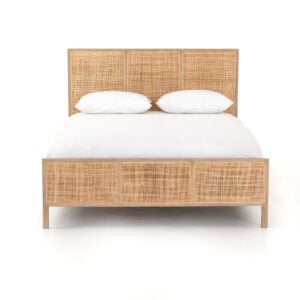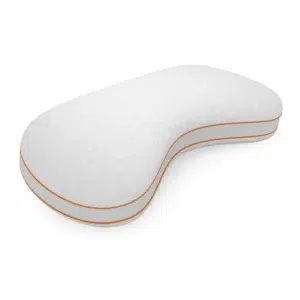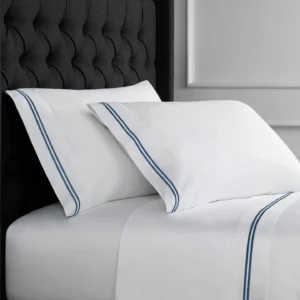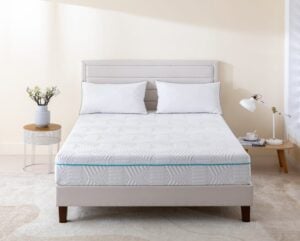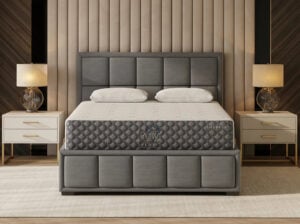Mattress for Pressure Ulcer Prevention: Top 5 Best 2025
Mattress for pressure ulcer prevention is crucial for individuals who spend prolonged periods in bed due to chronic health conditions. When selecting a mattress, consider the following options:
- Alternating pressure mattresses: These mattresses help reduce the risk of sores by regularly changing surface pressure.
- Low air loss mattresses: They maintain skin dryness by regulating temperature and moisture.
- Air fluidized beds: These provide a soft, fluid-like surface for effective pressure relief.
Pressure ulcers can develop rapidly, leading to significant health complications. Proper mattress selection is vital for prevention, as pressure injuries occur when prolonged pressure cuts off circulation, often over bony areas. Mattresses with pressure-relief technology can redistribute weight and minimize pressure on sensitive areas, aiding in prevention.
My name is Ben Trapskin, and through personal trials and extensive research, I’ve explored various options for mattress for pressure ulcer prevention. My goal is to guide you in finding the perfect choice to enhance both comfort and health.

Understanding Pressure Ulcers
Pressure ulcers, also known as pressure injuries, are skin and tissue damage caused by prolonged pressure. These injuries often occur over bony areas like the tailbone, heels, and hips. If you or a loved one spends a lot of time in bed or a chair, understanding these injuries is crucial.
Pressure Injury Stages
Pressure injuries are classified into four main stages:
- Stage 1: The skin is intact but shows redness or dark discoloration.
- Stage 2: The outer skin layer is damaged, exposing the soft tissue beneath. You might see blisters or open sores.
- Stage 3: The damage extends deeper, reaching the fat layer under the skin.
- Stage 4: The most severe stage, where the injury exposes muscles or even bone.

Each stage requires different care levels, and early intervention is key to preventing progression.
Risk Factors
Certain factors increase the risk of developing pressure ulcers, especially in older adults. Here are some key risk factors:
- Immobility: Limited movement due to illness or injury can increase the risk.
- Poor Nutrition: Inadequate nutrition can weaken skin, making it more susceptible to damage.
- Moisture: Excess moisture from sweat, incontinence, or wound drainage can lead to skin breakdown.
- Friction and Shear: Repeated rubbing or dragging can damage the skin, especially during repositioning.
According to a study, 65% of older adults receiving home care services developed pressure injuries over time, with more than 80% at severe risk. These statistics highlight the importance of proactive prevention strategies.
Preventive Measures
Preventing pressure ulcers involves a combination of care strategies:
- Regular Repositioning: Changing positions frequently helps relieve pressure on vulnerable areas.
- Skin Care: Keeping skin clean and dry reduces the risk of breakdown.
- Nutrition and Hydration: A balanced diet supports skin integrity and overall health.
- Specialized Mattresses: Mattresses like alternating pressure or low air loss models can redistribute weight and minimize pressure points.
Understanding the stages and risk factors of pressure ulcers is the first step in prevention. Choosing the right mattress for pressure ulcer prevention can make a significant difference in maintaining skin health and preventing these painful injuries.
Up next, we’ll explore the different types of pressure-relieving mattresses available to help you make an informed choice.
Mattress for Pressure Ulcer Prevention
When it comes to preventing pressure ulcers, the right mattress can make all the difference. Pressure redistribution, breathability, and durability are key features to look for in a mattress designed to safeguard against these painful injuries.
Pressure Redistribution
The main goal of a mattress for pressure ulcer prevention is to redistribute pressure evenly across the body. This reduces the risk of pressure buildup in vulnerable areas like the hips and heels. Alternating pressure mattresses, for instance, use air bladders that inflate and deflate periodically. This movement helps maintain blood flow and reduces the risk of skin breakdown.
A study highlighted in the Journal of Wound Care found that alternating pressure surfaces significantly lower the risk of pressure injuries compared to standard foam mattresses. They are particularly beneficial for individuals who cannot move independently.
Breathability
Breathability is another crucial factor. A mattress that promotes airflow helps keep the skin cool and dry, reducing moisture buildup that can lead to skin damage. Low air loss mattresses are designed with this in mind. They use a continuous flow of air to manage moisture and temperature, creating a more comfortable sleeping environment.
According to Medicare.gov, low air loss mattresses are often recommended for patients with existing pressure ulcers or those at high risk due to their moisture management capabilities.
Durability
Finally, durability is essential. A mattress designed to prevent pressure ulcers should withstand daily use without sagging or losing its supportive properties. High-quality materials like advanced foams and reinforced edges contribute to a longer lifespan, ensuring consistent performance over time.
For example, the Purple Refresh Mattress combines durable construction with innovative materials to offer both support and longevity. Its edge support system prevents sagging and extends the usable sleep surface, providing reliable comfort night after night.
In summary, selecting a mattress with effective pressure redistribution, excellent breathability, and robust durability is vital for preventing pressure ulcers. These features work together to maintain skin health and comfort, offering peace of mind for those at risk.
Next, we’ll dive deeper into the different types of pressure-relieving mattresses, including alternating pressure, low air loss, and air fluidized options, to help you find the best fit for your needs.
Types of Pressure-Relieving Mattresses
Choosing the right mattress is crucial for preventing pressure ulcers, especially for individuals who are bedridden or have limited mobility. Let’s explore the three main types of pressure-relieving mattresses: alternating pressure mattresses, low air loss mattresses, and air fluidized mattresses. Each type offers unique benefits custom to different needs.
Alternating Pressure Mattresses
Alternating pressure mattresses are designed with air bladders that inflate and deflate cyclically. This creates a gentle massaging effect that helps redistribute pressure across the body, reducing the risk of pressure sores.
-
How They Work: The continuous inflation and deflation of air bladders promote blood circulation. This movement helps prevent skin breakdown by ensuring no single area of the body bears weight for too long.
-
Best Suited For: Individuals who are at moderate to high risk of developing pressure ulcers. These mattresses are often used in hospitals and home care settings.
A notable example is the MedMattress line, which offers affordable options for alternating pressure therapy. Their mattresses incorporate real-time pressure monitoring to adjust air flow, optimizing comfort and support.
Low Air Loss Mattresses
Low air loss mattresses focus on temperature regulation and moisture control. They are equipped with tiny holes that allow air to circulate, keeping the skin cool and dry.
-
How They Work: Continuous airflow helps manage moisture and temperature, creating a comfortable sleeping environment. This feature is especially important for patients with excessive sweating or incontinence issues.
-
Best Suited For: Patients who require moisture management and temperature control, such as those with existing pressure sores or at high risk due to prolonged immobility.
These mattresses are highly recommended for their ability to maintain skin integrity. As noted by Medicare.gov, they are often prescribed for individuals with severe pressure ulcers.
Air Fluidized Mattresses
Air fluidized mattresses offer a unique sleeping experience with their ceramic beads and fluid-like feel. They are ideal for offloading pressure around bony areas.
-
How They Work: Warm, pressurized air circulates through a chamber of tiny ceramic beads, creating a buoyant, fluid-like surface. This design minimizes pressure on the skin and helps manage moisture.
-
Best Suited For: Individuals with advanced pressure injuries or open wounds who need a very low-pressure environment.

While these mattresses are highly effective, they can feel warmer and may require special maintenance. It’s essential to ensure proper hydration for users due to potential dehydration risks.
In conclusion, selecting the right type of mattress—whether it’s an alternating pressure, low air loss, or air fluidized mattress—depends on specific needs and risk factors. Each offers distinct advantages that contribute to preventing and managing pressure ulcers. Next, we’ll highlight the top five mattresses for pressure ulcer prevention to help you make an informed choice.
Top 5 Mattresses for Pressure Ulcer Prevention
Choosing the right mattress is key to preventing pressure ulcers. Here are five top choices, each with unique features to meet different needs.
MedMattress K-2 Kare-Zone
The MedMattress K-2 Kare-Zone is a standout for its alternating pressure capabilities. It’s designed to be an affordable option without sacrificing quality. The mattress uses air bladders that cyclically inflate and deflate, helping to redistribute pressure and improve blood circulation. This makes it an excellent choice for those at moderate to high risk of developing pressure ulcers.
Span-America PressureGuard® Easy Air LR
The Span-America PressureGuard® Easy Air LR is ideal for hospital use due to its advanced pressure redistribution technology. This mattress ensures even weight distribution, reducing the risk of pressure sores. Its design helps maintain skin integrity, making it a preferred option in clinical settings where patients are bedridden for extended periods.
Vive Alternating Air Pressure Mattress Pad
For home use, the Vive Alternating Air Pressure Mattress Pad is a practical choice. It’s lightweight, portable, and waterproof, offering convenience and protection against spills or incontinence. The whisper-quiet pump ensures a peaceful environment, making it suitable for home care settings where comfort and ease of use are priorities.
Optima Auto Alternating Pressure Relief Mattress System
The Optima Auto Alternating Pressure Relief Mattress System is notable for its battery backup feature. This ensures continuous operation even during power outages, providing peace of mind. It also accommodates a high weight limit, making it versatile for various patient needs. The system automatically adjusts pressure settings, delivering personalized support.
Premium True Low Air Loss Mattress
The Premium True Low Air Loss Mattress offers pulsation and a stretch cover for improved comfort. The pulsation feature gently massages the body, promoting circulation and reducing pressure points. The stretch cover adds an extra layer of comfort and helps maintain a hygienic sleeping surface. This mattress is designed for those who need advanced pressure relief and moisture management.
By considering these top mattresses, you can find the best fit for your needs, ensuring effective pressure ulcer prevention and improved comfort. Next, we’ll explore additional support surfaces that can complement these mattresses for even better outcomes.
Additional Support Surfaces
When it comes to preventing pressure ulcers, mattresses aren’t the only solution. There are other support surfaces that can help improve comfort and reduce pressure. Let’s look at some of these options.
Mattress Overlays
What They Are: Mattress overlays are pads placed on top of a mattress to improve comfort and pressure distribution. They come in various materials, such as foam, gel, or air-filled cells.
Benefits:
- Cost-Effective: A budget-friendly way to improve an existing mattress.
- Versatile: Can be used with different types of beds.
- Portable: Easy to transport and reposition.
Considerations:
- Stability: Overlays can sometimes shift, requiring frequent adjustments.
- Limited Support: Not a replacement for a specialized pressure-relieving mattress.
Best For: Individuals seeking an affordable, temporary solution to improve their mattress’s pressure-relieving properties.
Pressure Relief Cushions
What They Are: Specialized seat pads designed to distribute weight and prevent pressure buildup when sitting. These are especially useful for wheelchair users or those who spend long periods sitting.
Benefits:
- Portable: Easily moved between different seats.
- Variety: Available in different shapes and materials, like foam or gel.
- Multi-Use: Can also be used to protect heels or elbows.
Considerations:
- Size and Fit: Must be chosen to fit the user’s body and seat shape.
- Movement: Some cushions may shift with movement.
Best For: Those needing pressure relief while sitting, particularly wheelchair users.
Adjustable Bed Frames
What They Are: Beds that can be adjusted to different positions using a remote control. They allow for head and foot elevation and other positioning options.
Benefits:
- Pressure Redistribution: Helps to alleviate pressure on specific body parts.
- Ease of Movement: Assists with getting in and out of bed.
- Health Benefits: Can help with issues like snoring or acid reflux.
Considerations:
- Cost: Generally more expensive than standard bed frames.
- Compatibility: Requires a compatible mattress to function properly.
Best For: Individuals who need frequent position changes or have specific health conditions that benefit from elevation.
By integrating mattress overlays, pressure relief cushions, and adjustable bed frames into your pressure ulcer prevention strategy, you can significantly improve comfort and reduce the risk of developing pressure injuries. These additional support surfaces work alongside specialized mattresses to provide comprehensive care.
Next, we’ll answer some frequently asked questions about choosing the right mattress for pressure ulcer prevention.
Frequently Asked Questions about Mattress for Pressure Ulcer Prevention
What is the most effective mattress for pressure ulcer prevention?
Choosing the right mattress for pressure ulcer prevention involves understanding the different types of mattresses available. Alternating pressure mattresses and low air loss mattresses are among the most effective options.
-
Alternating Pressure Mattresses: These mattresses use air bladders that inflate and deflate in cycles, redistributing pressure across the body. This constant movement helps maintain blood flow and reduces the risk of pressure sores.
-
Low Air Loss Mattresses: These mattresses have small holes that allow air to circulate, keeping the skin cool and dry. They are particularly beneficial for individuals with excessive sweating or incontinence, as they help manage moisture and temperature.
Both types of mattresses offer significant benefits in preventing pressure ulcers by ensuring even weight distribution and reducing pressure points.
How do you prevent pressure sores in bed?
Preventing pressure sores, or ulcers, involves a combination of strategies:
-
Repositioning: Regularly changing positions helps relieve pressure on any one area of the body. Caregivers should assist individuals who are unable to move themselves.
-
Skin Care: Keeping the skin clean and moisturized is crucial. Dry skin can crack easily, while overly moist skin can become soft and more susceptible to sores.
-
Using Pressure-Relieving Mattresses: As mentioned, using mattresses that redistribute weight and reduce pressure points can play a critical role in prevention.
By combining these methods, individuals and caregivers can significantly reduce the risk of developing pressure sores.
What are pressure-relieving mattresses?
Pressure-relieving mattresses are designed to distribute body weight evenly and minimize pressure on vulnerable areas. They are essential for individuals at risk of developing pressure ulcers due to limited mobility.
-
Redistribute Weight: These mattresses help spread the body’s weight over a larger surface area, reducing pressure on specific points like the tailbone, hips, and heels.
-
Relieve Pressure Points: By alleviating pressure on bony prominences, these mattresses help maintain healthy blood flow and prevent tissue damage.
Pressure-relieving mattresses come in various forms, including foam, gel, and air-filled options. Each type offers unique benefits, and the choice depends on individual needs and the level of risk for pressure ulcers.
Understanding these mattresses and prevention strategies can make a significant difference in comfort and health for those at risk of pressure ulcers.
Next, we’ll explore the top mattress options available for pressure ulcer prevention.
Conclusion
Choosing the right mattress is crucial for preventing pressure ulcers, and that’s where we come in. At Yawnder, we specialize in expert evaluations to help you find the perfect mattress for your needs.
Our team tests and reviews top sleep products with an unbiased approach, ensuring you get accurate, reliable information. We focus on various sleep needs, including pressure ulcer prevention, to guide you in making informed decisions.
When it comes to mattress selection, consider factors like pressure redistribution, breathability, and durability. These elements are key in preventing pressure sores, especially for those with limited mobility. A well-chosen mattress can make a world of difference in comfort and health.
Explore our mattress selection to find the best options custom to your needs. With Yawnder’s expertise, you can sleep easier knowing you’re supported by the right choice.
A good mattress is an investment in your health. Let us help you make the best choice for you or your loved one.



